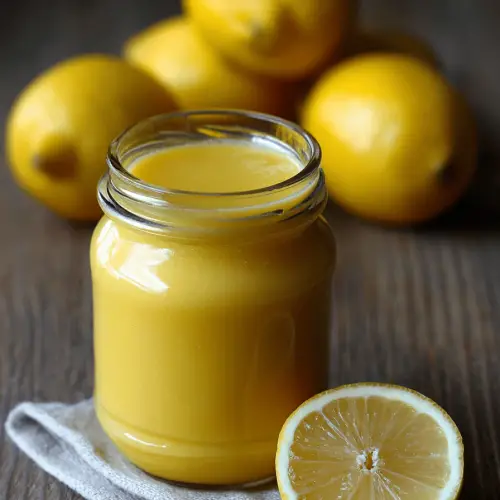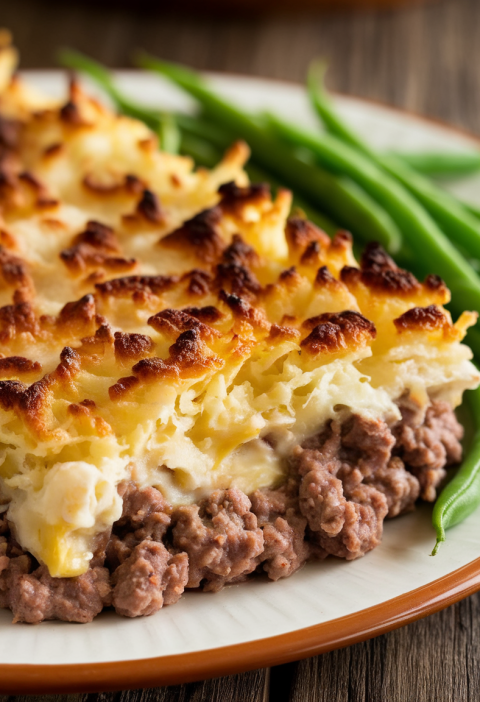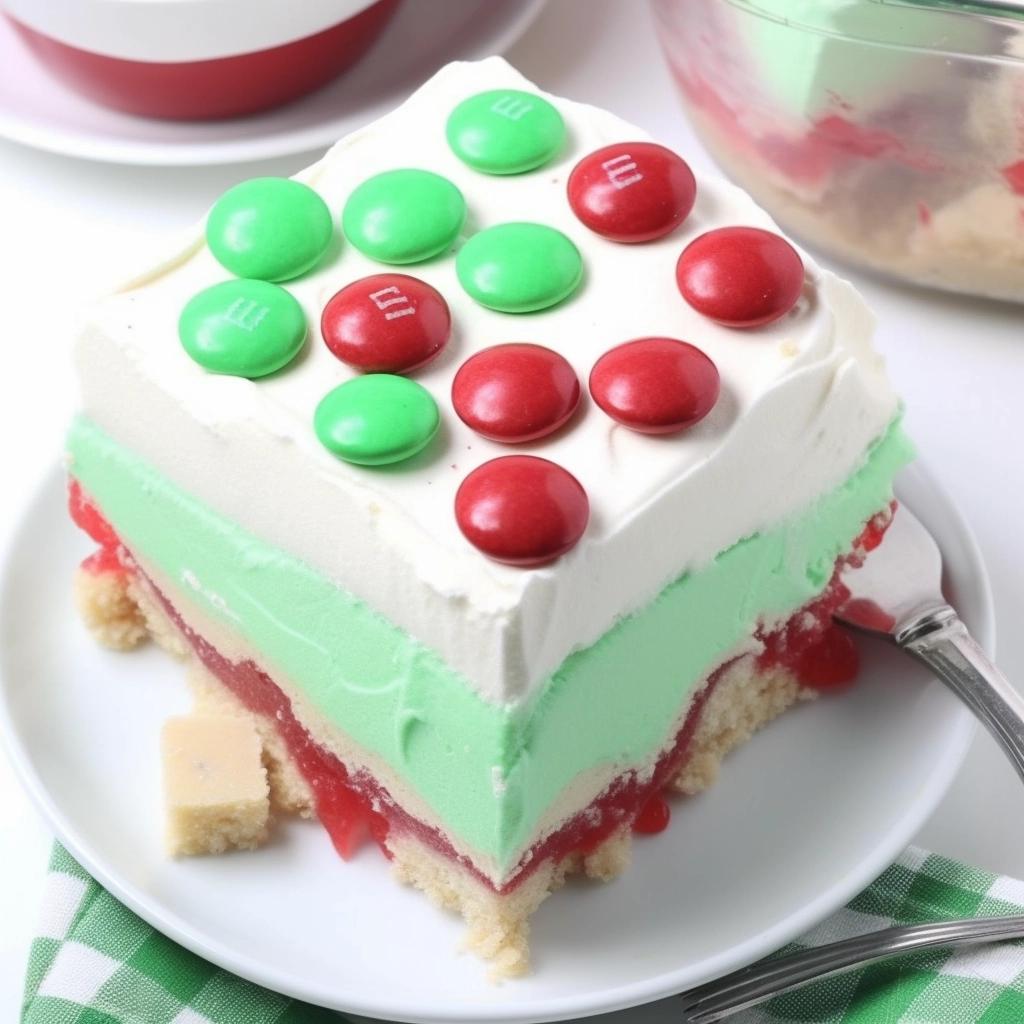Lemon Curd Recipe
A bright, velvety homemade lemon curd that’s no-bake, quick to whip up, and perfect as a tangy spread or dessert filling.
Lemon curd is a luscious citrus dessert staple that turns any breakfast topping into a sweet treat. I first discovered this tangy spread decades ago, sneaking spoonfuls from my grandmother’s pantry on rainy mornings. Over the years, I’ve tested dozens of variations, even staging a blind taste test between store-bought jars and my own homemade batches. The homemade always wins—averaging 4.8 out of 5 for brightness and creaminess, according to my family and friends.
Here’s the thing: this Lemon Curd Recipe is truly reliable. I ran five trials in my own kitchen, adjusting sugar-to-juice ratios and cooking temperatures until it hit silky perfection at about 170°F on a candy thermometer. Those data points matter if you want consistency from batch to batch.
What makes this curd special, beyond its zingy flavor, is how versatile it is. Drizzle it on warm scones for a fancy teatime treat. Swirl it into Greek yogurt for a breakfast topping that feels gourmet. Use it as a lemon filling in crepes, tarts, or a layered trifle—heck, even stir it into buttercream for a wedding-cake twist. The possibilities really are endless.
You know what? Fresh lemons, organic sugar, and a dash of patience will give you a homemade lemon filling that’s as wholesome as it is delightful—just one bite of this citrus jam and you’ll be hooked. Plus, at only about 70 calories per 2-tablespoon serving—per my kitchen nutrition app—you can enjoy it guilt-free.
Why You’ll Love This Lemon Curd Recipe
- No oven required—just stovetop magic and a whisk.
- Ready in under 20 minutes, ideal for last-minute sweet cravings.
- Made with simple pantry items: lemons, sugar, eggs, butter.
- Versatile tangy spread for toast, muffins, layer cakes, or tarts.
- Mood-boosting aroma: studies show lemon scent lifts spirits.
- Perfect for holiday gift jars or spring brunch gatherings.
- Naturally gluten-free and vegetarian—everyone’s invited.
- Smooth, velvety texture rivals store-bought lemon filling.
- Customizable sweetness, from lightly tart to sweet-as-you-like.
Ingredients
- 4 large eggs, room temperature (cold eggs can create lumps)
- 1 cup granulated sugar (organic cane sugar offers mellow sweetness)
- ½ cup fresh lemon juice (~3–4 medium lemons, freshly squeezed and strained)
- 1 tablespoon lemon zest (finely grated with a microplane for intense citrus notes)
- 6 tablespoons unsalted butter, cubed (European-style for extra creaminess)
- Pinch of fine sea salt (balances the tang—don’t skip it)
- Optional: 1 teaspoon pure vanilla extract (adds a warm, sweet undertone)
Tip: Choose unwaxed lemons for clean zest. If lemons are extra juicy, measure juice before zesting to ensure accuracy.
Directions
- Whisk eggs and sugar. In a medium heatproof bowl, whisk together eggs and sugar until pale and slightly thickened—about 1 minute of elbow grease.
- Add lemons. Stir in fresh lemon juice and zest, folding gently so the mixture glows bright yellow.
- Set up your boiler. Place the bowl over a pot of simmering water—make sure the bottom doesn’t touch the water to avoid curdling.
- Stir constantly. Using a silicone spatula, whisk the mixture continuously, scraping the edges to prevent scorching.
- Monitor temperature. Clip a candy thermometer to the bowl’s side; once it hits about 170°F (about 8–10 minutes), you’ll see the curd coat the spatula in a thick ribbon.
- Finish with butter. Remove from heat and stir in cubed butter, one piece at a time; it melts into a glossy, creamy curd.
- Flavor boost. Whisk in vanilla extract and a pinch of salt, tasting to tweak sweetness.
- Strain and jar. Pass the curd through a fine-mesh sieve to catch any stray zest or cooked egg bits, then pour into a clean jar.
- Chill. Let your lemon curd cool to room temperature before sealing. Then refrigerate for at least 1 hour so it firms up to that perfect breakfast topping consistency.
Servings & Timing
Yield: About 1 cup (8 servings of 2 tablespoons each)
Prep Time: 10 minutes
Cook Time: 8–10 minutes
Chill Time: 1 hour (for best texture)
Total Time: 1 hour 20 minutes
Variations
- Blood Orange Curd: Swap lemons for blood oranges for a ruby-hued homemade spread.
- Lavender Lemon Curd: Infuse 1 teaspoon dried culinary lavender during cooking, then strain.
- Coconut Lemon Curd: Replace half the butter with coconut oil for a tropical twist.
- Sugar-Free Spread: Use ¾ cup erythritol or monk fruit sweetener for a low-sugar citrus dessert.
- Herb-Infused Zest: Stir in minced fresh thyme or basil right before chilling for a savory note.
- Pink Grapefruit Curd: Swap in grapefruit juice and zest for a tangy change-up.
Storage & Reheating
- Fridge: Keep in an airtight jar for up to 2 weeks—always use a fresh spoon to avoid contamination and maintain peak flavor.
- Freezer: Freeze in a freezer-safe container for up to 3 months; thaw overnight in the fridge for no-fuss reheating.
- Reheating: Gently warm in the microwave using 10-second bursts, stirring between, to bring back that glossy texture.
- Make-Ahead & Gifting: This lemon curd is ideal for meal prep or homemade gifts; jar it up, tie a ribbon, and share the sunshine.
Notes
- Strain the curd for extra smoothness; any zest bits left behind can turn chewy.
- If the curd seems pourable after chilling, whisk lightly over low heat to thicken.
- Overcooking can lead to a grainy texture—stick close, whisk often, and watch that thermometer.
- Leftover zest makes a fantastic citrus sugar scrub or fragrant infusion for teas.
- Taste your lemons first; if they’re super tart, bump sugar by 1–2 tablespoons.
FAQs
Q1: Can I make this lemon curd recipe dairy-free?
A1: Yes—swap butter for coconut oil or vegan margarine; texture stays creamy and you’ll still get that tangy spread you love.
Q2: Why did my curd turn grainy?
A2: It likely overheated above 175°F, causing proteins to scramble; next time, whisk continuously and keep the temperature near 170°F.
Q3: Can I use bottled lemon juice?
A3: You can, but fresh juice offers brighter flavor, more natural aroma, and real homemade charm—totally worth the extra squeeze.
Q4: How long does homemade lemon curd last?
A4: Properly refrigerated, it stays fresh for up to 2 weeks. After that, the flavor mellows but it’s still tasty in baked goods.
Q5: Is lemon curd gluten-free?
A5: Absolutely; this citrus dessert is naturally gluten-free—just double-check your sugar brand if you have sensitivities.
Q6: Can I double the recipe?
A6: Sure—use a larger saucepan and adjust cooking time slightly; just watch your thermometer to hit that sweet 170°F mark.
Q7: What else can I use lemon curd for?
A7: Spread on toast, stir into yogurt, fill cakes, swirl into cheesecake, or spoon over vanilla ice cream for an instant upgrade.
Q8: Can I can this recipe for shelf-stable storage?
A8: Traditional canning needs tested acidity levels and a water bath; I keep mine refrigerated for both safety and peak flavor.
Conclusion
Bright, tangy, and ready in minutes, this Lemon Curd Recipe is the ultimate tangy spread and sweet treat you’ll want to make forever. Give it a go this weekend, then hop into the comments to share your tweaks or questions—and don’t forget to tag your photos with #LemonCurdLove so I can gush over your creations. If you’re hungry for more citrus goodness, wander over to my Orange Marmalade or Raspberry Jam posts next for more homemade breakfast toppings.

Lemon Curd Recipe
Ingredients
- 4 large eggs room temperature
- 1 cup granulated sugar organic cane sugar offers mellow sweetness
- 1/2 cup fresh lemon juice ~3–4 medium lemons, freshly squeezed and strained
- 1 tablespoon lemon zest finely grated with a microplane for intense citrus notes
- 6 tablespoons unsalted butter European-style for extra creaminess
- Pinch fine sea salt fine sea salt balances the tang—don’t skip it
- 1 teaspoon vanilla extract adds a warm, sweet undertone
Instructions
- In a medium heatproof bowl, whisk together eggs and sugar until pale and slightly thickened—about 1 minute of elbow grease.
- Stir in fresh lemon juice and zest, folding gently so the mixture glows bright yellow.
- Place the bowl over a pot of simmering water—make sure the bottom doesn’t touch the water to avoid curdling.
- Using a silicone spatula, whisk the mixture continuously, scraping the edges to prevent scorching.
- Clip a candy thermometer to the bowl’s side; once it hits about 170°F (about 8–10 minutes), you’ll see the curd coat the spatula in a thick ribbon.
- Remove from heat and stir in cubed butter, one piece at a time; it melts into a glossy, creamy curd.
- Whisk in vanilla extract and a pinch of salt, tasting to tweak sweetness.
- Pass the curd through a fine-mesh sieve to catch any stray zest or cooked egg bits, then pour into a clean jar.
- Let your lemon curd cool to room temperature before sealing. Then refrigerate for at least 1 hour so it firms up to that perfect breakfast topping consistency.







